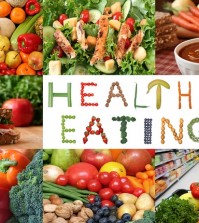- Make It Yourself Lavender Heart-Shaped Bath Bombs!
- 20 Things You Never Knew About “Down There”
- 12 Best Foods For Those Suffering From Arthritis Pain
- 12 Personal Hygiene Mistakes Almost Everyone Makes (Mom Never Told You About #4!)
- 15 Medicinal Plants And Herbs From The Cherokee People
- 12 Mind-Blowing Benefits Of Drinking Coconut Water During Pregnancy
- 12 Outstanding Winter Foods That Won’t Fatten You Up Like A Christmas Turkey
19 Of The Most Addictive Foods On Earth And 17 That Aren’t

Photo credit: bigstock.com
According to studies, as many as 20 percent of all Americans suffer from food addiction. You will not be surprised to find out that the percentage is higher among the obese. Those who have a food addiction are very much like drug addicts. However, if you have ever known anyone with a food addiction, you know that they don’t become addicted to things like apples or lettuce. This is because the problem lies with the food, not the person.
The University of Michigan studied addictive eating behavior in more than 500 subjects. All subjects received 35 types of foods, some processed and others not. Afterwards, the subjects were asked to rate the foods by assigning one point to the addictive foods that weren’t addictive and seven to those that were extremely addictive.
This study found that 10 percent of the subjects had a severe food addiction. Not only that, but 92 percent of the subjects had additive behavior when it came to certain foods. Subjects noted that they really wanted to stop eating certain foods, but felt that they could not.
It’s interesting to note that almost all of the addictive foods were processed foods. These foods are high in sugar, salt, fat, or all three.
Addictive eating behavior is not just a lack of willpower. There are actually biochemical explanations behind why some people lose control over their consumption or simply cannot stop eating certain foods.
Mostly, this is because processed foods are designed to be hyperpalatable, which means they taste so incredibly good that the pleasure centers in the brain light up like a Christmas tree. Of course, the brain wants to repeat these feelings again and again. Soon, certain foods begin to control what and how much you eat, rather than you controlling what you eat.
Of course, these effects will vary from person to person. Some people have preferences for one type of food over another, but these 19 foods were all listed as being “problem” foods for subjects in two different studies.
Continue to Page 2

































